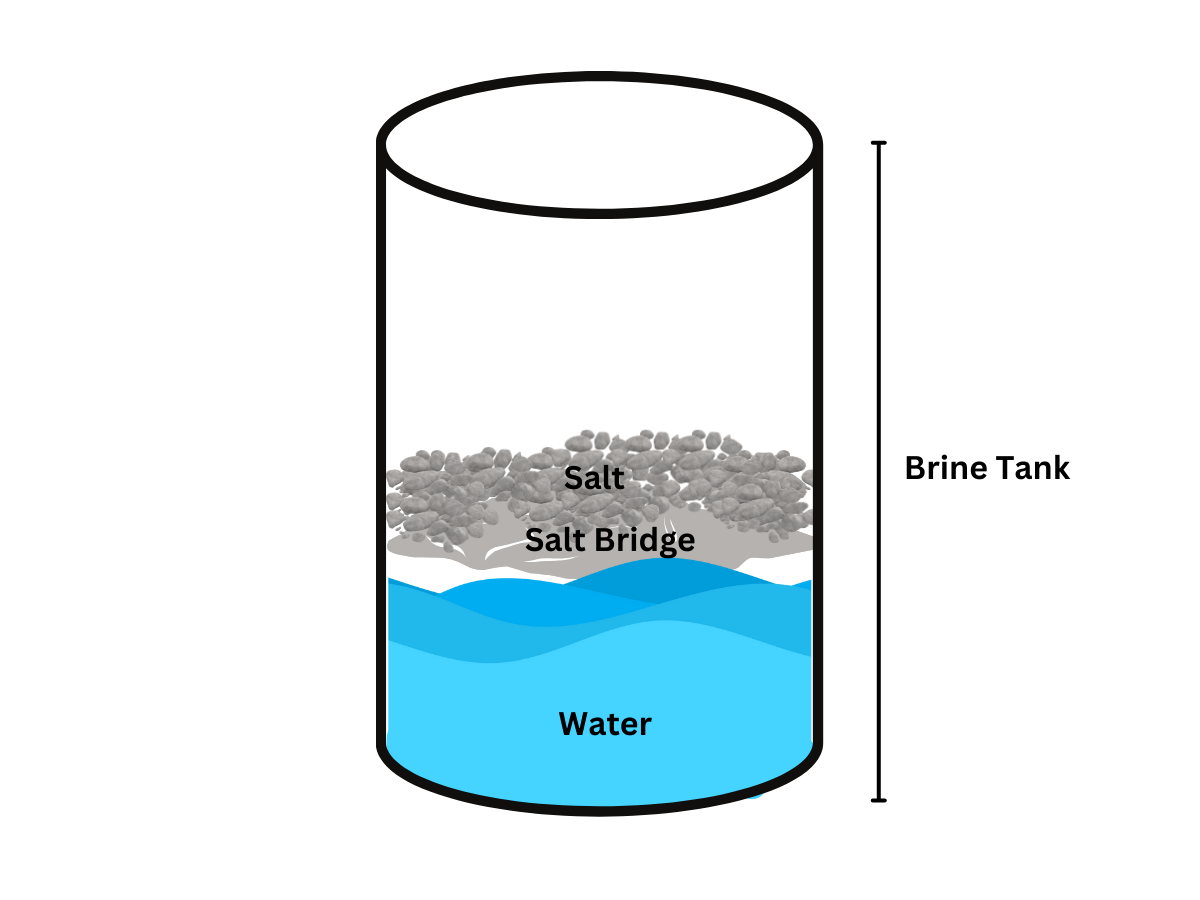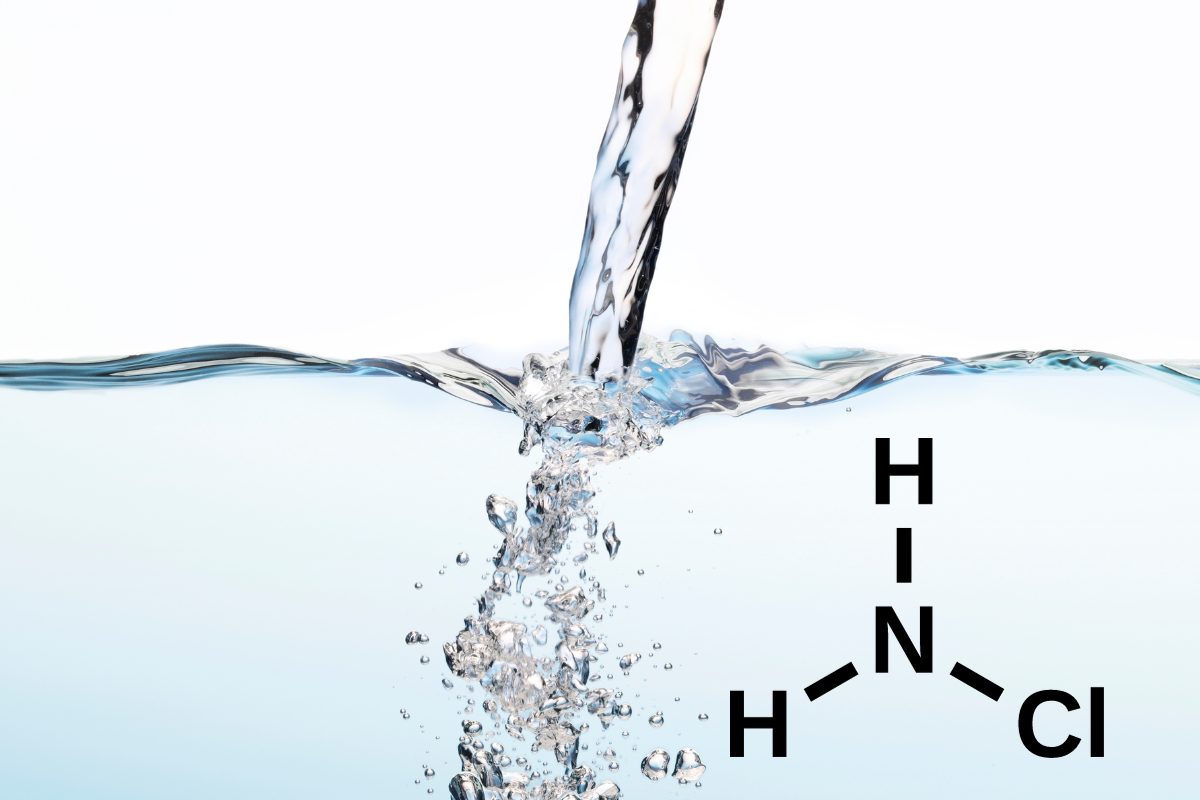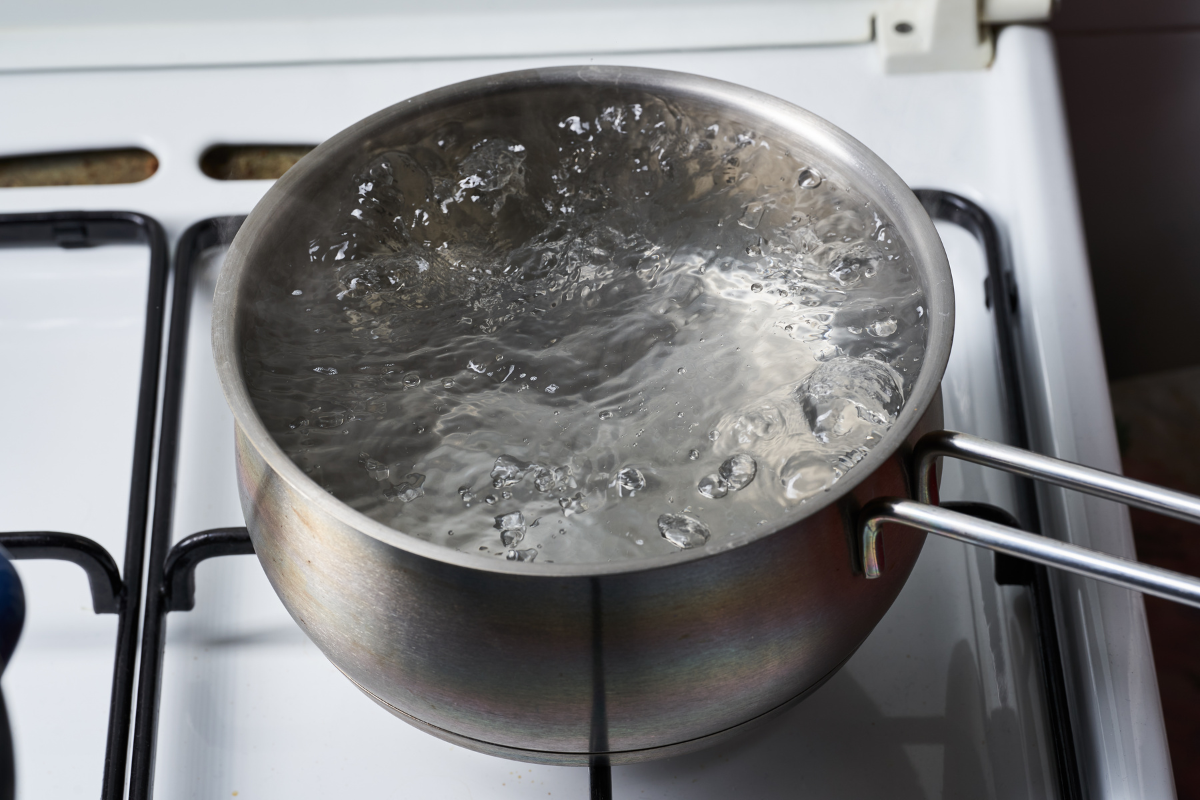What To Do About A Salt Bridge
A salt bridge is a common occurrence in water softeners, especially in areas with a more humid climate. Generally, they are an easy fix; but how do you know when your softener has a salt bridge? What do they look like, and why is it important to remove them?
What is a Salt Bridge?
A salt bridge is a layer of hardened salt that forms in the brine tank of a water softener. Normally, salt is added to the brine tank and left to sit in dry storage until the resin layer needs to be recharged. At this point, water enters the tank and dissolves the salt, creating the brine solution. This brine is then pushed into the main water softener tank, where it can refresh the resin layer with salt ions to effectively remove hard minerals.
The salt bridge crust partially or fully blocks new salt from coming in contact with the water. This means plain water is being pushed into the resin bed as opposed to a brine with salt ions; a water softener with a salt bridge is thus unable to remove calcium and magnesium minerals.

What Causes A Salt Bridge?
Salt can form due to a combination of factors:
High Humidity
When the air around the water softener is humid, it can cause the salt pellets or crystals in the brine tank to partially dissolve and clump together, forming a salt bridge. If you live in a humid environment, it is especially important to ensure your brine tank lid is always securely fastened.
Incorrect Salt Type or Size
The type and size of salt used in the water softener can also contribute to salt bridge formation. You should only use the manufacturer-recommended salt in your water softener.
Consistency with salt is also important in avoiding masses and clumping. Different salt types will dissolve at different rates. Mixing crystal salt with pellet salt will mean a non-uniform brine, which is a prime condition for salt-bridge formation. If you do need to switch salt types, wait until the salt level is low.
Remember also to never use rock salt. This is also known as “ice melt” and it is not the same thing as water softener salt. Ice melt is designed for use on your sidewalks and driveway, not drinking water, so it is much less refined and may contain undesirable contaminants.
Water Level
Over or under filling your brine tank can also cause problems. Too much water means the brine is not “charged” enough with salt ions, while too little water will contain undissolved sodium that can re-harden into a salt bridge. Follow the manufacturer’s instructions for the correct water levels, and check frequently to maintain them.
What to Do If You Notice a Salt Bridge
If you notice a salt bridge in your water softener, it is essential to address it promptly so your system can get back to work.
Remove Excess Salt
Turn the water off to your softener or use the bypass valve, if your machine has one. Then, scoop out the loose salt that sits on top of the salt bridge. If it is dry, you can set it aside to re-use once you are ready to regenerate.
Break Up the Bridge
Next, you will want to break up the salt bridge. Use a broom handle or other long tool to gently apply pressure until it begins to crack and break apart. Take your time and be careful not to damage the interior components of the softener.
Clean the Brine Tank
Remove the broken pieces of the salt bridge, then thoroughly clean the tank. Use warm water to dissolve any salt that remains on the bottom and/or sides of the tank. Add in fresh salt according to the manufacturer’s instructions, then set the machine to regenerate via the manual button.
Signs Of A Salt Bridge
Aside from physically noticing a salt bridge in your water softener, there are several signs that can indicate the formation of a salt bridge. These signs may suggest that the water softener is not functioning optimally due to the obstruction caused by the salt bridge. Here are some common signs to watch out for:
Residual Hard Water Deposits
If you start to see mineral deposits or limescale buildup on faucets, fixtures, or appliances despite having a water softener, it could indicate that the softener isn't functioning correctly due to a salt bridge. These deposits occur when hard minerals like calcium and magnesium are not adequately removed from the water.
Visible Salt Levels Remain Unchanged
Another indication of a salt bridge is when the salt level in the brine tank remains constant over time, despite the softener being in use. This suggests that water is not effectively dissolving the salt to create the brine necessary for regeneration.
Unusual Sound or Motor Activity
Sometimes, a salt bridge can cause unusual sounds or motor activity in the water softener. You might hear grinding noises, irregular cycling, or unusual vibrations, indicating that the system is experiencing difficulty during regeneration cycles.
Salt Dome Formation
In some cases, instead of a complete salt bridge, a dome-shaped formation of salt may occur at the top of the tank, resembling a hardened crust. While this isn't technically a salt bridge, it can still impede the proper functioning of the water softener and should be addressed.
Increased Water Usage
If your household's water consumption remains the same but you notice an increase in water bills, it could be a sign that your water softener is not operating efficiently. This could be due to a salt bridge hindering the regeneration process, leading to higher water usage.
Water Softener Maintenance In Colorado
If you suspect your water softener is not running as efficiently as it should, the best course of action is to consult with a water care professional. He or she can do a full inspection to address any issues and give you tips for getting the most out of your water softener.
In Colorado, The Water Pros install and maintain water softeners and whole home filtration units all along the Front Range. If you have any questions or require assistance with an existing or new water softener, please call or
go online today.









